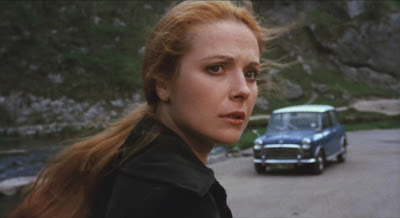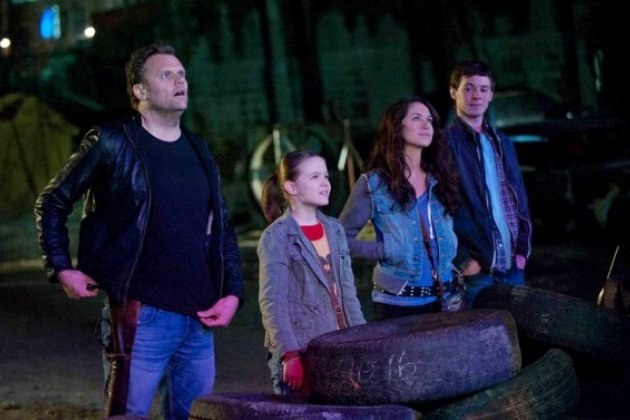Identity crisis is a bizarre diagnosis for a movie, so allow me to explain. For starters, it's a movie that seems to have a different title for every viewer. In the UK, it's The Living Dead at Manchester Morgue. But in other parts/times of the UK it was called The Living Dead. In the United States the film was called Don't Open the Window at one point, and titles from other parts of the world translate to all kinds of things. My favorite example of this is the original Spanish title - Non si deve profanare il sonno dei morti - that translates to Do Not Speak Ill of the Dead. I don't know the history of the movie and its release, but it seems like it's been given more names than The Artist formerly known as The Artist Formerly Known as Prince.
As if that's not confusing enough, Let Sleeping Corpses Lie also seems kind of like a homeless film. Most horror fans would look at the film and say "Oh, that's an Italian horror flick" and they'd be wrong....kind of. The film was directed by Jorge Grau, a Spaniard, produced in Italy and England, and features a cast made up of plenty of Italians, Spaniards, and even American Arthur Kennedy as a stodgy detective. The other primary cast members are half British/half Italian Ray Lovelock (who has a fantastic name and a fantastic beard) and Spanish born Cristina Galbo, who seem to have chemistry together despite being obviously dubbed. Which is kind of a microcosm of why the film works so well, because all of these random ingredients are here, yet they inexplicably fit together.
A majority of the credit must be given to Grau, a director that I'm not very familiar with but one that I respect immensely. In an introduction filmed for the DVD release of the film, Grau sends a wonderful message to horror fans about to see the film for the first time. "I hope you have a bad time" and 'I hope you get very scared and that you suffer profoundly" aren't things most directors would say to their audiences, but Grau seems almost cheerful as he reminds us that his intention is to make us squirm. There's something about this little nod from the director that has stuck with me for years, and really made me admire the guy's eye for horror.
The other reason I love the guy is for how perfectly he balances all the things I want from a zombie movie throughout his film. Let Sleeping Corpses offers an actual plot, a ton of atmospheric tension, and just the right amount of gore to keep me fascinated. Don't let the European shine fool you, because Grau's film doesn't go for Fulci levels of blood splatter. It does, however, feature some perfectly executed attacks and enough organ-ripping to keep you disgusted, all while still managing to feel like a nightmare for the characters involved.
The plot has an ecological explanation for the zomificiation epidemic, and some of the symbolism Grau uses to make his point is a little too on-the-nose at times. But the heavy handed segments of the film can be forgiven, as they are a wonderful excuse to move the story to some vibrant country settings and one of the most realistically dreary graveyards in horror history. A lot of zombie movies skip the reason why zombies are happening, but Grau's film does a good job of having a reason and not getting too caught up in it. Above all else, this film is a fever dream of undead madness, not a social commentary.
I'm not sure I was very scared, nor did I suffer profoundly, but I still can see where Grau was coming from when he made this fine horror film. Let Sleeping Corpses Lie is always entertaining and never insulting, with great special effects - those zombie eyes do haunt me - and a nice pace. It's an odd little zombie film that feels like the bastard child of Romero and Bava, but that doesn't stop the film from being one of the most underrated horror films of the 1970s. No matter which title they decide to use or which country they attribute the film to, most horror fans should fall in love with this one.











































